Amtraking Across the Mitten
I've pledged to be an infrequent flyer and have taken to Amtrak.
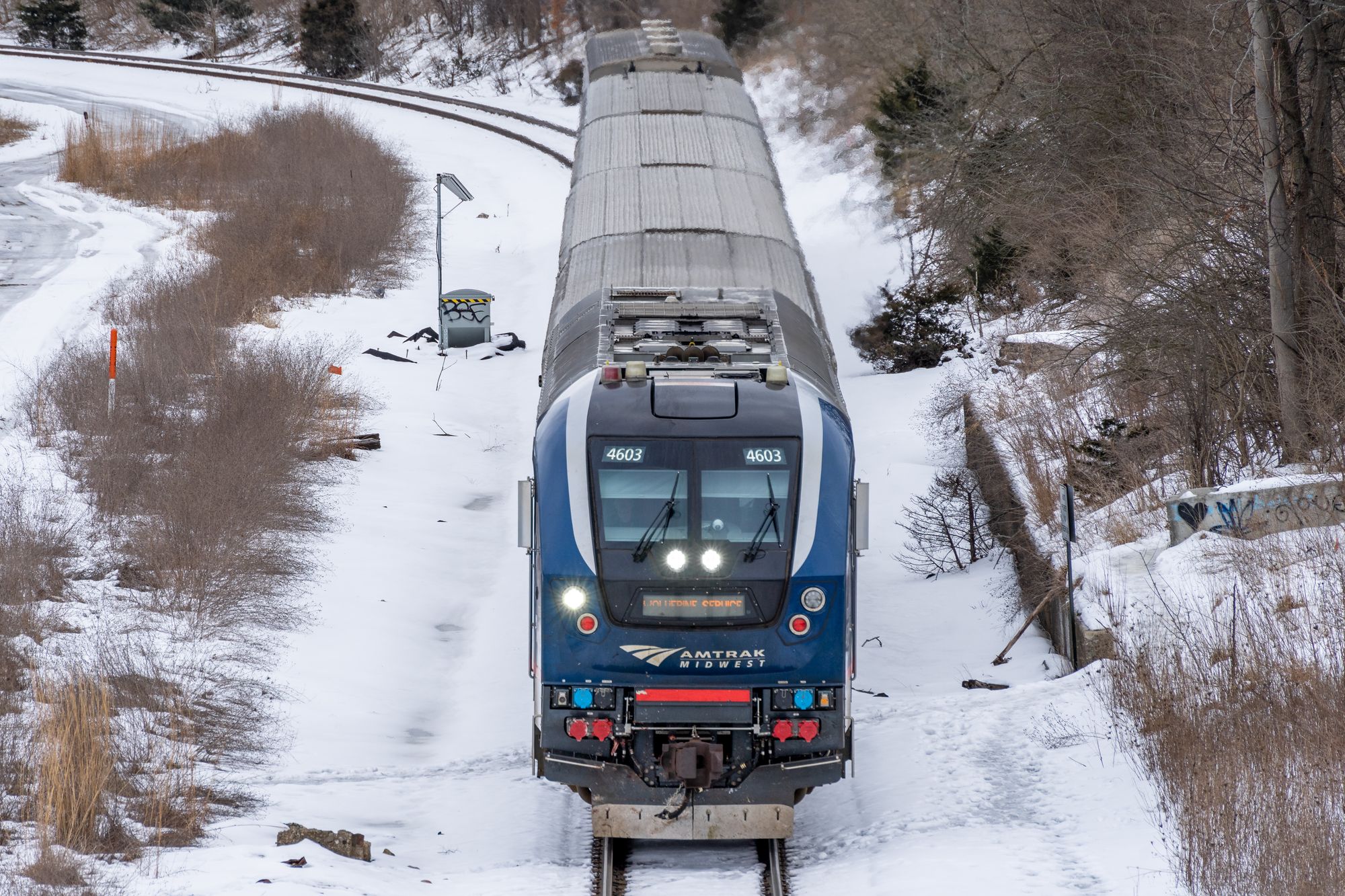
Call me Midwestern bicoastal. I live in Detroit, but my work life is divided between the Motor City and Milwaukee. I average 10-15 work trips per year from Detroit to the Cream City and back. Over the past five years, I have traveled via almost every mode of transportation available between these cities. I haven't taken an intercity bus, car ferry or flying car, but I have driven, flown and taken Amtrak.
My conclusion: the train is where it's at. It presents the optimal sweet spot of value, comfort and convenience for travel from Detroit to Milwaukee.
Starting last fall, I went on a train kick and started booking nearly every trip on Amtrak. The train trip from Detroit to Milwaukee is a two-legged affair. The mighty Amtrak Wolverine runs between Pontiac, Michigan and Chicago, with intermediate stops, including Detroit, Ann Arbor, Jackson and Kalamazoo. I take the Amtrak Wolverine from Detroit to Chicago Union Station. Then, from Chicago, the Amtrak Hiawatha takes me the rest of the way to Milwaukee.
Time
The cities are 253 miles distant from one another as the crow flies. The total time of the trip can vary based on schedules and other factors. Generally, the journey from Detroit to Chicago is five hours with a maximum speed of 110 miles per hour, plus a 90-minute ride on the Hiawatha. There's usually about a layover in Chicago to change trains of an hour and change. So, the total travel time between these Detroit and Milwaukee is 7 1/2 hours.
This compares to a six-hour car trip, or more realistically, a seven-hour car trip factoring in a stop or two for a meal, gas and restroom break. Car travel time depends on traffic and road construction, particularly in Chicagoland.
A direct flight is only 45 minutes, but there's the drive to and from the airport, the time spent going through security, waiting at the gate, taxiing and going through the boarding and de-planing process. And flying necessitates a rental car, which increases cost and travel time.
The Amtrak Wolverine can reach top speeds of up to 110 miles per hour between Porter, Indiana and Dearborn, Michigan. That's about as fast as it gets on the American rail network outside of Acela service on the Northeast Corridor. Over the past 10 years, the Michigan Department of Transportation has made significant investments in tracks and implementing Positive Train Control technology to make the Wolverine route the first state-owned route in the country to reach speeds of 110 mph.
CityNerd, the popular YouTube channel, pegged the optimal distance where high-speed rail outcompetes other modes of transportation as 250 miles. The distance from Detroit to Milwaukee is 253 miles as the crow flies. Making this city pair a good one for additional investments to make rail a more competitive alternative to driving or flying.
Comfort
Traveling by train means traveling in comfort.
Driving solo from Detroit to Milwaukee is monotonous and unpleasant, all the more so because the route traverses Chicagoland. Drivers can take the direct path through downtown Chicago on the Dan Ryan or can skirt the city, traversing the western suburbs and then picking up I-94 north of town. It's longer but less congested and stressful. Either way, it's an unpleasant drive. Add a little road construction, and it becomes a nightmare.
Delta flights from Detroit to Milwaukee tend to use either Canadair CRJ-900 regional jets or some flavor of Boeing 737. These are small, cramped aircraft with minimal legroom and inadequate overhead bin space. Beverage service was removed during COVID-19 and seems unlikely to return. Wi-Fi is available, but for only a 30-minute window while the aircraft is above 10,000 feet.
The Wolverine, on the other hand, features new Siemens Venture passenger cars. These are roomy cars with lots of legroom, in-seat power and fast USB charging, digital signage to let you know the next station stop and the venerable Amtrak café car. On board, you can get sandwiches, snacks and various beverages, including coffee, soft drinks, beer and wine.
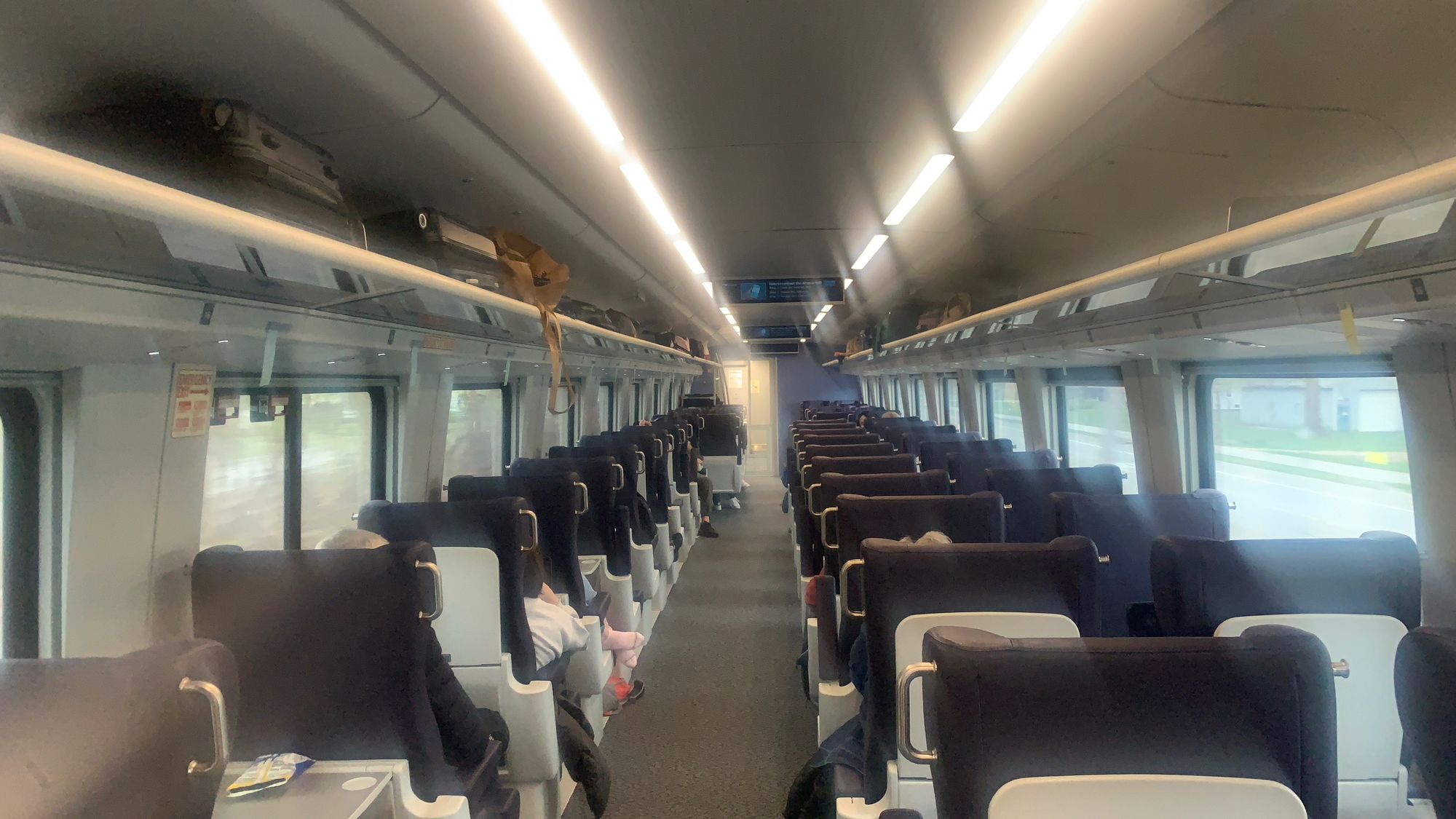
Wi-Fi is available for the duration of the journey. However, it can be spotty at specific points along the route. The Wolverine also features a cafe car. The attendant serves a variety of hot and cold sandwiches, hot dogs, hamburgers, chips, snacks and a variety of beverages.
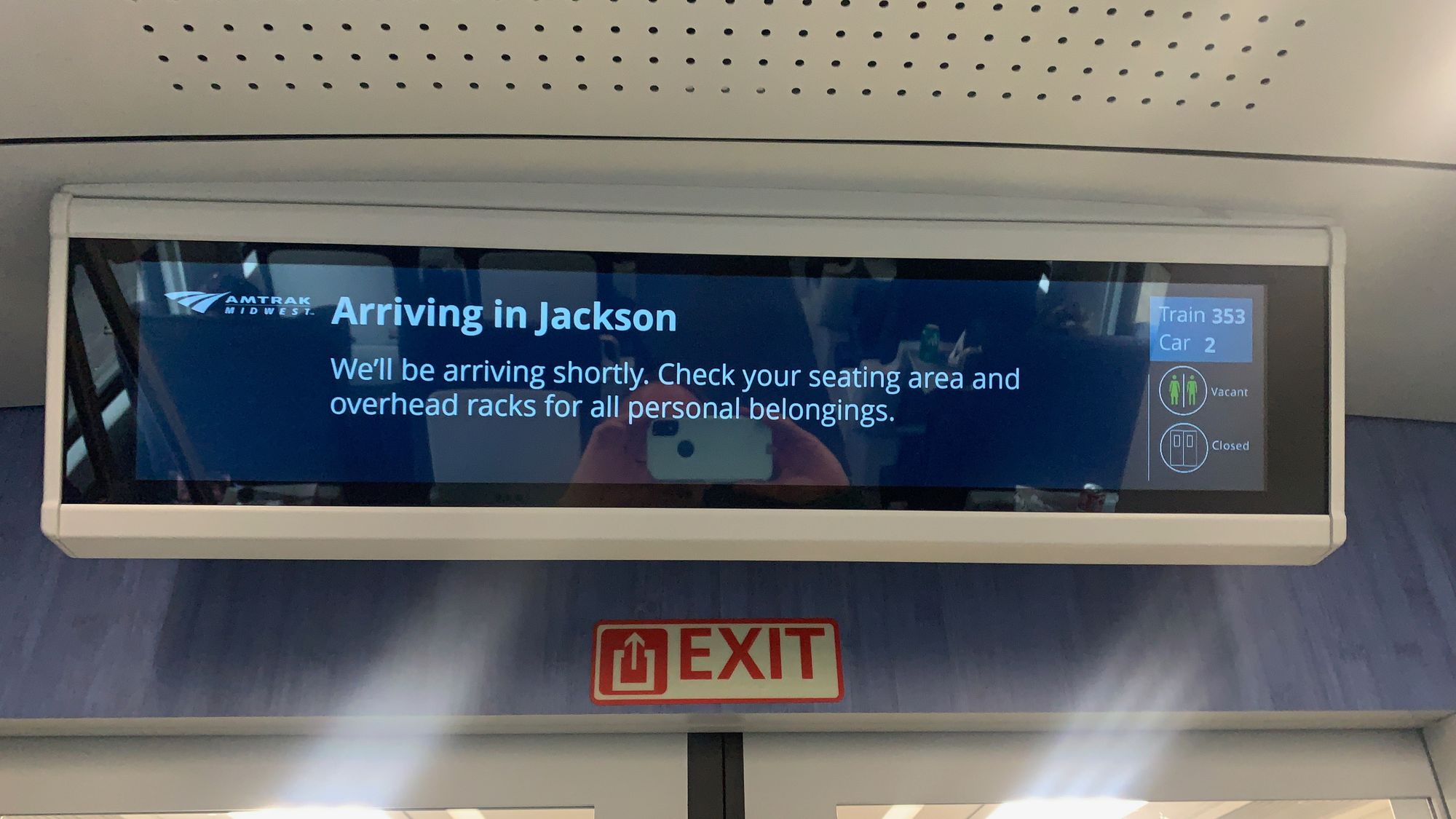
Convenience
It's possible to carry a bicycle on board the Wolverine and Hiawatha trains at an added cost. I love the concept, but the fun factor is outweighed by the thought of carting my bike around Union Station and babysitting it during the layover. With that in mind, renting a bikeshare bike at my destination is more convenient. There is a Bublr Bikes station just outside Milwaukee Intermodal Station and another station a block from my final destination, making this the perfect car-free final mile solution. The excellent Milwaukee County Transit System is another good option for the last mile.
Cost
A coach ticket on Amtrak is cheaper than a nonstop flight, sometimes by as much as a factor of five. Breaking it down, a recent search for a weekday round-trip Amtrak coach fare was $130. Using the 2023 IRS mileage reimbursement rate of 58.5 cents per mile, the reimbursable cost for a single round-trip from Detroit to Milwaukee is $448.11. A Delta Airlines main cabin round-trip fare for the same timeframe was advertised for $428 on Delta.com.
There's also the time value of money factor. Driving requires focus. Distracted driving is inadvisable if not illegal. I don't text and drive and will only take a hands-free phone call while driving, and even then, only when absolutely necessary. This makes drive time unproductive. Driving more than six hours on a work day inevitably means hours of e-mail correspondence piling up. So, there's the productivity penalty that comes with driving.
Environmental Impact
According to Google, a round-trip flight from Detroit Metropolitan Airport to Milwaukee Mitchell Airport releases 122 kg of CO2. How does this stack up to other modes of transportation? Hard to say. The most recent Transportation Energy Data Book published by the Oak Ridge National Lab for the U.S. Department of Energy compares energy use for various modes of transportation. According to this data, Amtrak is 46 percent less energy-intensive than a passenger car as measured in BTUs per passenger mile, 53 percent less energy-intensive than a truck and 33 percent less energy-intensive than air travel. However, the researchers note that it is impossible to get an accurate comparison given the high number of variables at play. So, these stats provide only a rough and imperfect frame of reference until researchers devise better analytic tools to make accurate energy comparisons among transportation modes.
Nevertheless, some European governments are limiting or seeking bans on short-haul flights to combat the climate crisis. France plans to ban flights with a 2.5-hour or less train connection. Belgian and Dutch airlines offer no domestic flights, ceding them to the efficient, well-developed passenger rail networks. I could go on to sing the praises of Nederlandse Spoorwegen (NS), the Dutch national passenger railroad. Perhaps another day.
Car-free intercity travel
North America is car-centric, and making a car-free trip seems daunting. But, my home is a 30-minute walk from the Detroit New Center Amtrak station. And my Milwaukee endpoint is about 35 minutes on foot or 15-ish minutes by bike or bus from the Milwaukee Intermodal Station. So, the option of going car-free cuts down on a lot of the cost of travel. I work for a human-service nonprofit, so saving money from the travel budget goes directly to feeding and clothing people in need.
Ditching the car means I don't have to worry about incurring damage to a rental car. I don't have to worry about forgetting to refuel the rental before returning it. No need to worry about a check engine oil warning light, flat tire or anything else.
And as a fun bonus, I can give the impression of being at home when I'm not by leaving my car parked on the street when I'm out of town. My neighbor Erica sometimes texts me when I'm out of town: "Are you at home right now?" When I explain that I'm in Milwaukee, her response is: "Oh, I saw your car parked on the street and assumed you were home." So, there's extra peace of mind that with my car parked outside my house, it's not as evident that I'm out of town.
So, I'm going all in on train travel. My Delta SkyMiles medallion status has lapsed. I have canceled my SkyMiles credit card. I've pledged to be an infrequent flyer. I'm taking the train instead. It's a less complicated and lower-stress way to travel.
Making a good thing better
The Wolverine runs just three round trips per day between Pontiac and Chicago. This route connects the two largest metros in the Midwest. These trains often sell out. Adding more trains and, if possible, additional passenger cars per train will get more passengers to try the Wolverine and boost the economies of the cities along the route.
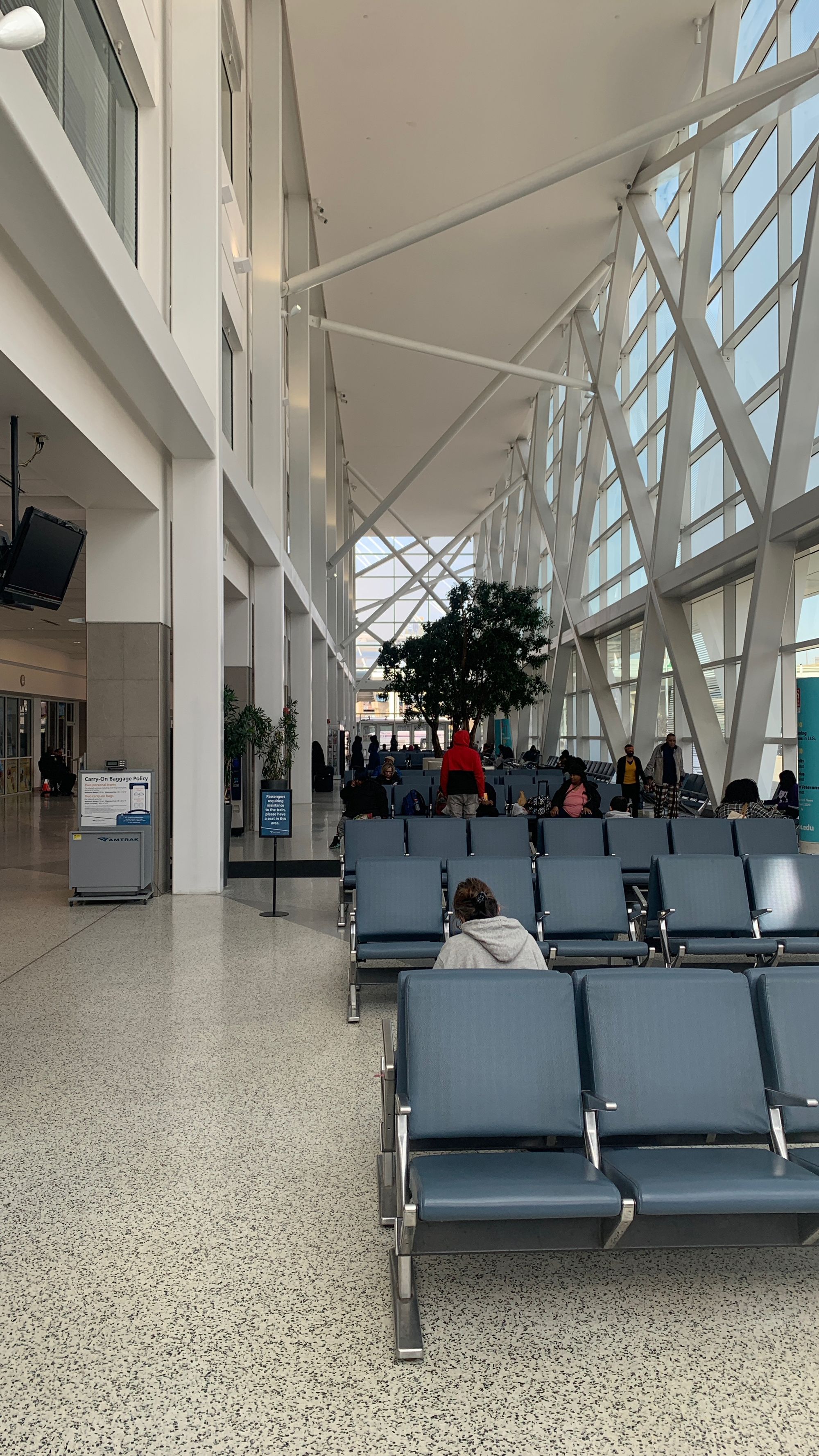
Longer-term, Amtrak should consider electrifying the route for faster speeds, greater energy efficiency and improved reliability. The Hiawatha connecting Chicago and Milwaukee is the most on-time Amtrak route outside the Northeast Corridor. These trains often sell out. There is probably demand for one or two additional round trips from Milwaukee to Chicago. And extending the Hiawatha route from Milwaukee to Madison or further on to the Twin Cities, as is being studied, would undoubtedly be a win for Midwest economic growth and tourism. I've never visited Madison or Minneapolis/St. Paul. The only thing stopping me is my aversion to road trips, the unavailability of rail service and the high cost of flights.
Detroit's future front door
MDOT has announced plans to retire the Detroit New Center Amshack Station. The station architecture is evocative of a 1990s Wendy's, complete with a metal faux-mansard roof to hide the building's mechanical systems. Local lore says that after Amtrak left the grand Michigan Central Station in the late 1980s, this station was built as a temporary facility meant to last a few years until a permanent station was built on the opposite side of the tracks. Now, 30 years later, Detroit is set to get a new intermodal station bringing intercity train and bus services under one roof.
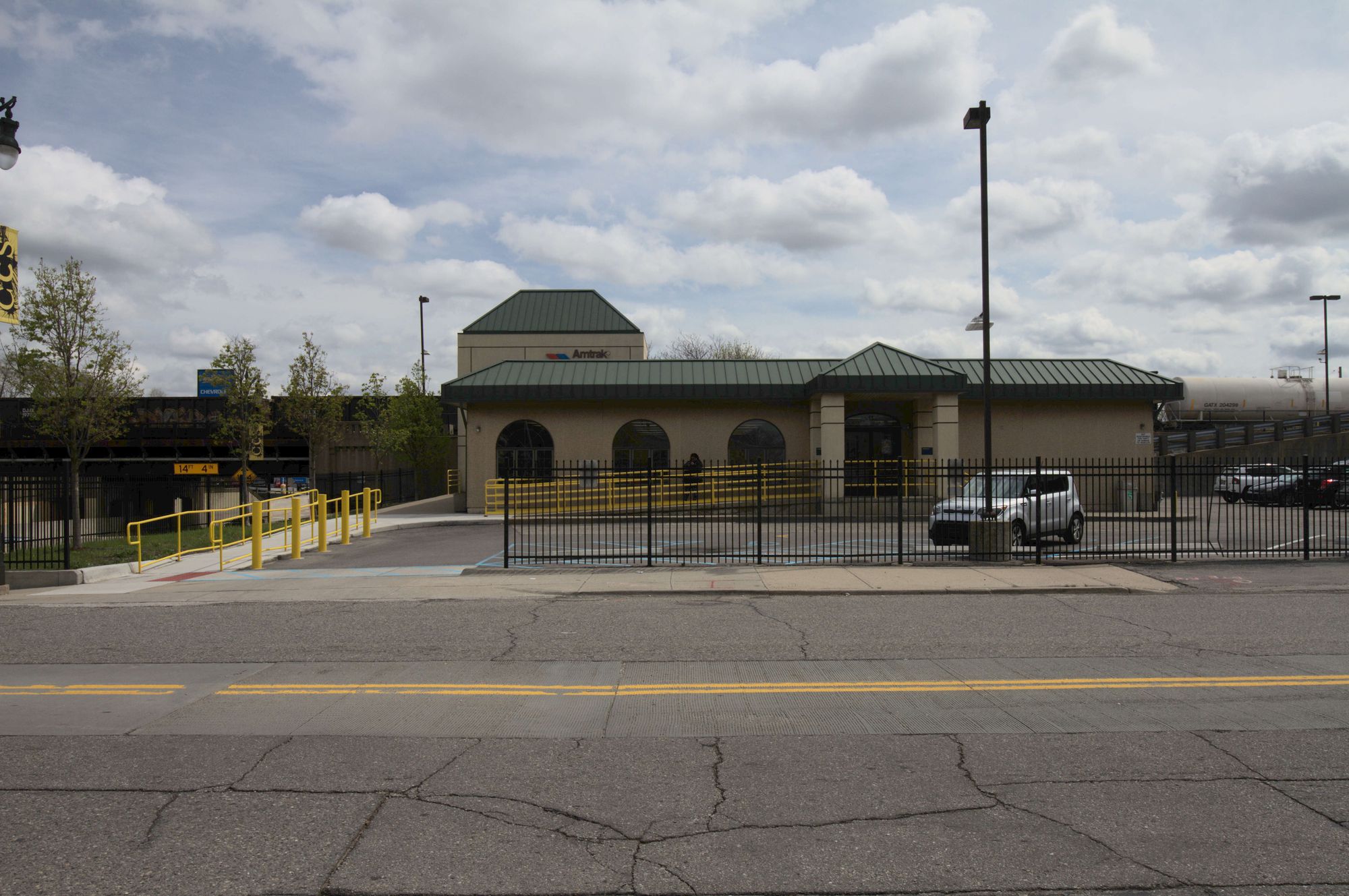
It's a once-a-generation opportunity, but optimizing the new station with lots of connections to ground transportation will be necessary. It is on the Woodward corridor and will tie into existing regional public transit, such as it is. But MDOT planners must include amenities like on-site car rental, on-site indoor secure bicycle storage, a MoGo station directly adjacent to the building entrance, and architecture appropriate to a once-a-generation public building that will serve as our front door. There also should be on-site food and beverage amenities. Detroit Metropolitan Airport is an impressive complex that consistently gets high marks. Detroit's future train station must be appropriately designed to serve as the welcome center to a metro region of 5.5 million and part of the economic engine of the American heartland. Getting there will require demands and pushback from an engaged public so we don't get a mediocre intermodal station. We won't get another shot at this for decades, so let's not blow it.

